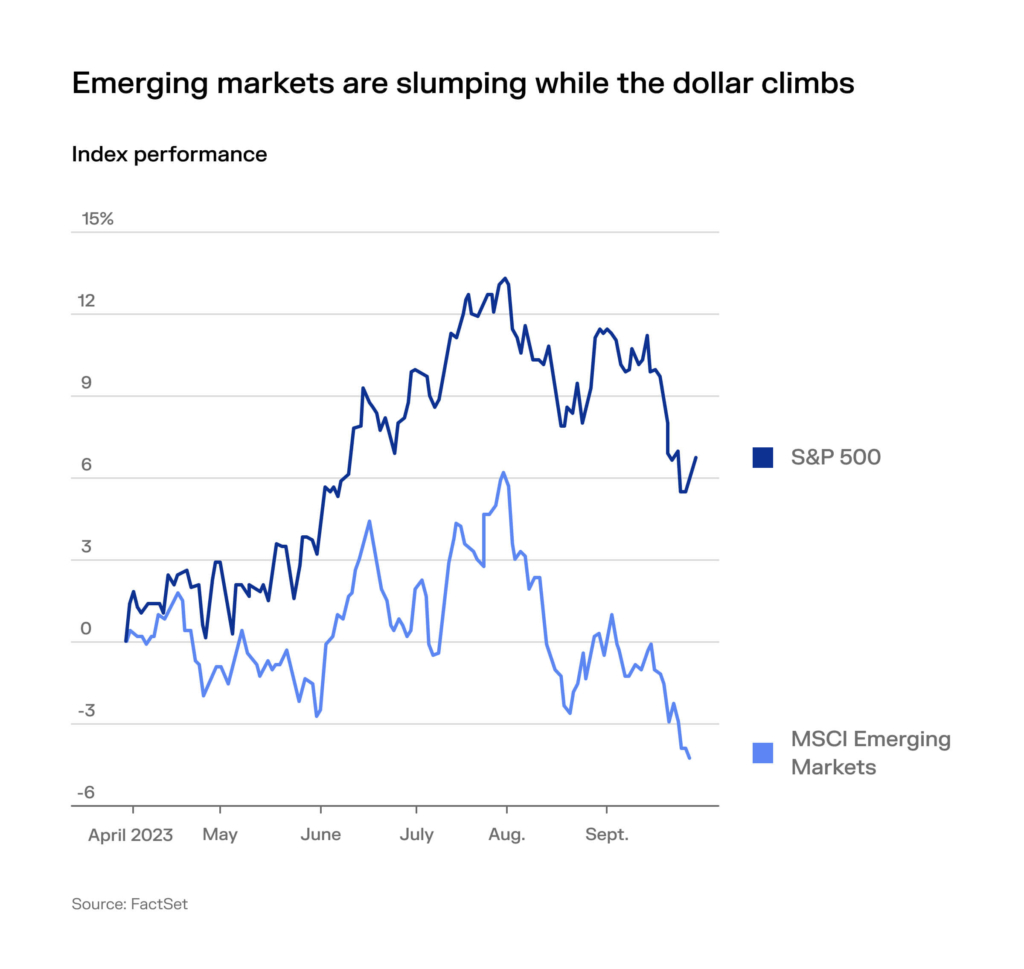Carlos Eduardo Letran Bueno, M&A Advisor at Onward Consultoria with over two decades of experience in Corporate Finance, and Business Consulting, has shared his take on how to navigate the M&A waters in this delicate moment of shifting interest rates.
Entering the interest-rate era
The Wall Street Journal recent reports, “M&A Can Pay Off, but It’s Far From a Sure Thing” by Ben Dummett (Sept. 17, 2023) and “A New Interest-Rate Regime Has Begun. These Are the Market’s Winners and Losers,” by Hardika Singh (Oct. 1, 2023), touches upon two different but interrelated aspects shaping today’s financial markets:
- The fickle nature of M&A outcomes
- The newly begun interest-rate era
High rewards but high risks
Ben Dummett explores the multifaceted nature of M&A. While these transactions offer strategic avenues for growth and value creation, they come with no guarantees of success. The article cites data suggesting that the failure rate for such deals is high, with older studies indicating 70% to 90% of deals failing to create value for the buyer.
However, more recent research shows a more balanced picture, indicating that companies that engage in frequent, smaller deals alongside bigger acquisitions tend to be more successful due to their honed abilities in target identification and integration.
Barry Weir, Citi’s co-head of European mergers and acquisitions, said: “If the risk-adjusted return from M&A is higher than the benefits from returning cash to shareholders or some other lower-risk alternative, then it makes sense. If it doesn’t meet this hurdle, then you shouldn’t be doing M&A.”

Global value of M&A deals
Dummet’s report emphasizes that the success of an M&A deal is contingent on various factors such as risk-adjusted returns, initial stock reactions, and effective integration of the acquired company.
It provides real-world examples, like Termo Fisher, to illustrate the role of factors like employee retention in deal-making success. The report cautions that despite the potential upsides like boosted sales and cost-cutting, companies must weigh the alternatives and risks carefully.
Issues like regulatory pushback, unanticipated costs, or distraction of top management could jeopardize the supposed benefits, leading to financial losses, as illustrated by the example of FIS and Worldpay.
The interest-rate jigsaw puzzle
In her “A New Interest-Rate Regime Has Begun. These Are the Market’s Winners and Losers”, Hardika Singh throws light on the shifting fortunes in the new interest-rate landscape. In a new interest-rate environment where rates are expected to remain elevated for an extended period, market dynamics are witnessing a notable shift.
The U.S. Federal Reserve’s signaling to maintain current interest rates through 2024 has led to increasing government-bond yields, a climbing U.S. dollar, and a decline in stock market enthusiasm, particularly affecting the S&P 500.
On the asset class front, bonds are under further pressure, as are the yields, which have surged to their highest level since 2007. The much-lauded tech stocks, often referred to as the “Magnificent Seven” (Apple, Microsoft, Alphabet Inc., Amazon, NVIDIA, Tesla, and Meta), are showing vulnerabilities, as investors reconsider the high valuations of these market leaders in the face of rising rates.
Moreover, the impact is not just limited to the U.S.; global markets are feeling the ripple effects. Dividend-paying stocks have lost their appeal against the backdrop of rising yields on risk-free government bonds. Small caps are trailing behind their larger counterparts, more susceptible to economic downturns and less resilient financially.
Emerging markets are in a precarious position, exacerbated by a U.S. dollar that has been strengthening due to surging Treasury yields and robust economic data. This is making dollar-denominated goods and debts more expensive for these countries, further straining the global financial system.
Overall, the ongoing shifts in the interest-rate regime have broad repercussions, affecting asset classes and markets both domestically and globally.

The M&A and interest rate intersection
Higher interest rates recalibrate the M&A calculus. With borrowing costs rising, the internal rate of return on acquisitions will naturally be impacted. However, these rates also alter the valuations, possibly opening doors for value acquisitions. The article by Singh outlines how certain sectors, notably banks and insurers, are likely to benefit from higher rates, potentially making them attractive targets or aggressive acquirers.
In the words of Dummett, M&A is “far from a sure thing,” but it remains a compelling growth strategy, particularly in a business environment transformed by higher interest rates. Higher interest rates can indeed be a double-edged sword. They might inhibit some deals due to higher financing costs but could also force companies to engage in M&A activities to meet shareholder expectations for growth, given that organic growth might stall.
A strategic approach to M&A
Both reports converge on the need for companies to exercise discernment and strategy in their M&A activities. Considering the trends highlighted by Singh, organizations might need to be sector-specific in their M&A approach. For instance, a technology firm might look towards acquiring companies in sectors that are slated to be ‘winners’ in the new interest rate regime, thereby offsetting its own vulnerabilities.
Furthermore, due diligence must be far more exhaustive, covering not just financials but also the market position and scalability in a higher interest-rate environment. Companies should focus on acquisitions that can deliver operational synergies and provide a competitive edge, thereby maximizing the probability of achieving a higher internal rate of return in the new financial landscape.
In conclusion
Amid fluctuating interest rates, M&A endures as a foundational strategy for companies targeting resilient growth. A changing rate environment should, therefore, not deter firms but instead require a recalibration of M&A strategies to align with new market realities.
Navigating the intricacies of M&A successfully will require strategic foresight, meticulous planning, and perhaps most crucially, a nuanced understanding of the broader economic factors at play, such as the one provided by the new interest-rate regime.
As the rules of the game change, the fundamental strategic significance of M&A remains intact. In a world where the only constant is change, adapting your M&A strategies to fit the evolving landscape is not just wise but essential. Whether it’s seizing opportunities in ‘winning’ sectors or finding value in those undergoing challenges, M&A continues to offer a pathway for transformative growth and value creation.





